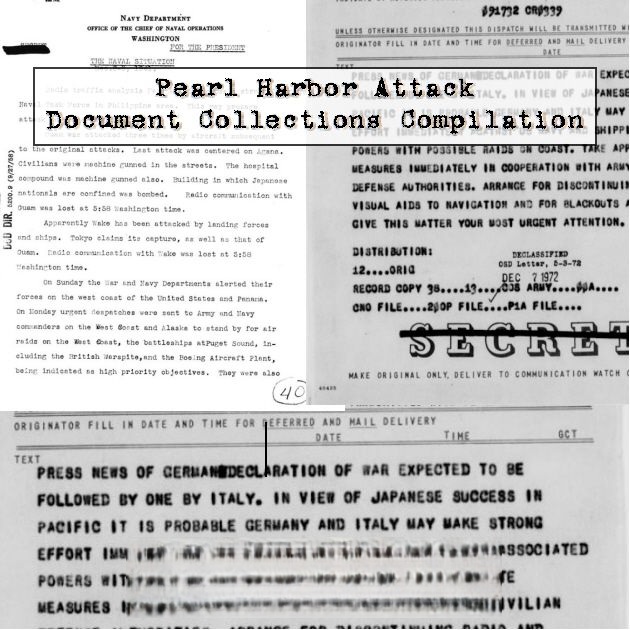
Description
Pearl Harbor Attack: Timeline and Key Figures
Prior to Fall 1940:
- Undated (Pre-Fall 1940): United States Army cryptanalysts begin efforts to solve Japanese Foreign Office’s cryptographic systems.
Fall 1940:
- Fall 1940: US Army cryptanalysts successfully solve some of Japan’s highest-grade diplomatic cryptographic systems. This leads to the initiation of “MAGIC,” the interception, decryption, and translation of secret Japanese diplomatic messages worldwide on a current basis. This information is highly classified and shared only with a few top US officials. (Note: MAGIC could only read diplomatic code, not military code).
December 7, 1941:
- December 7, 1941: The Japanese attack on Pearl Harbor occurs.
- Messages and dispatches from Pearl Harbor are sent at the time of the attack.
- US Navy photography is taken before, during, and after the attack.
- Japanese Navy also takes photographs of the attack.
- “Man on the Street” interviews and radio news broadcasts cover the immediate aftermath of the attack.
- Military files related to the attack are sent to and maintained in the White House war room.
February 1942:
- February 15, 1942: The Commander-in-Chief, U.S. Pacific Command (CINCPAC) completes and submits the “Report of Raid on Pearl Harbor, 7 December 1941” to the Secretary of the Navy. This report covers the activities of the U.S. Pacific Fleet and includes commanding officers’ narratives.
Post-Pearl Harbor (Undated, but following December 7, 1941):
- Undated: The Franklin D. Roosevelt administration engages in internal debate over the decision to intern Japanese Americans, following the Pearl Harbor attack.
- Undated: Damage reports and photographs of the damage done during the attack are compiled.
1957:
- 1957: William Friedman prepares his report on the Pearl Harbor Attack, utilizing documents and reports from the Army Security Agency and other military intelligence agencies’ files.
1994:
- 1994: Much of the material related to damage reports and photos from the Pearl Harbor attack is declassified.
2002:
- Prior to 2002: The Combatant Commander of United States Pacific Command holds the title of Commander-in-Chief, U.S. Pacific Command (CINCPAC).
January 2013:
- January 2013: The actual pages of the CINCPAC report, “Report of Raid on Pearl Harbor, 7 December 1941,” are officially declassified.
2015:
- 2015: Some material used by William Friedman in his 1957 report, originating from Army Security Agency and military intelligence files, is declassified.
Cast of Characters:
- Franklin D. Roosevelt:Bio: President of the United States at the time of the Pearl Harbor attack. His presidential and administration papers are key sources related to the bombing and the subsequent internal debate over Japanese American internment.
- Bernard Julius Otto Kuehn:Bio: A convicted Pearl Harbor spy, subject of 777 pages of FBI files.
- William Friedman:Bio: A figure who prepared a 1957 report on the Pearl Harbor Attack, utilizing documents from the Army Security Agency and other military intelligence agencies.
- Commander-in-Chief, U.S. Pacific Command (CINCPAC):Bio: The commanding officer of the U.S. Pacific Command (title held prior to 2002, later known simply as Combatant Commander). Responsible for submitting a comprehensive report on the Pearl Harbor raid to the Secretary of the Navy in February 1942. This report covered the activities of the U.S. Pacific Fleet.
Pearl Harbor Attack Compilation Document Collection
34,277 pages of documents and 5 hours 22 minutes of audio covering the December 7, 1941, attack on Pearl Harbor Attack by Japan in 13 collections.
Collections include:
Pearl Harbor Attack: Damage Reports & Photos – 165 pages of reports and photographs of damage done during the December 7, 1941, attack on Pearl Harbor. Much of this material was classified until 1994.
Pearl Harbor Attack: Photography – 300 photographs of the Pearl Harbor attack. United States Navy photography of Pearl Harbor, before, during, and after the Japanese attack of the December 7, 1941. Many of the photographs were classified as secret at the time they were taken. Includes several photographs taken by the Japanese navy. Also included is 30 additional images of messages and dispatches sent from Pearl Harbor at the time of the attack.
Pearl Harbor Attack: White House War Room Military Files – 2,455 pages of military files sent to and maintained in the White House war room, related to the December 7, 1941, Pearl Harbor attack, copied from materials held by the National Archives and Records Administration.
Pearl Harbor Attack: Commander-in-Chief, U.S. Pacific Command (CINCPAC) Documents – 850 pages, February 1942 Commander-in-Chief, U.S. Pacific Command (CINCPAC) report and commanding officers’ narratives covering the Japanese raid on Pearl Harbor, December 7, 1941. The report titled, “Report of Raid on Pearl Harbor, 7 December 1941,” was completed and submitted to the Secretary of the Navy on February 15, 1942. The actual pages of this particular report were not officially declassified until January 2013. This report covers the activities of the U. S. Pacific Fleet. Prior to 2002, the Combatant Commander of United States Pacific Command held the title of Commander-in-Chief, U.S. Pacific Command (CINCPAC).
Pearl Harbor Attack: MAGIC Army Interception of Japanese Communications – The 3,110 page, 8 volume Department of Defense study, “The MAGIC Background of Pearl Harbor.” By the fall of 1940 United States Army cryptanalysts had solved some of the Japanese Foreign Office’s highest grade cryptographic systems. The interception, decryption and translation, on a current basis, of secret Japanese world-wide diplomatic messages then began. The information the United States derived from this source, designated MAGIC, was highly classified and closely guarded. It went to only a few of the highest-level United States officials. It is important to note that MAGIC could only read Japan’s diplomatic code, not its military code.
Pearl Harbor Attack: Army Security Agency Files – NSA Pearl Harbor Study – 672 pages of documents and reports from the Army Security Agency and other military intelligence agencies’ files used by William Friedman in preparation in his 1957 report on the Pearl Harbor Attack. Some material in this collection was not declassified until 2015
Pearl Harbor Attack: Congressional Investigation Reports, Hearings & Documents – 22,816 pages of hearings, exhibits and the final report of the Congressional Joint Committee on the Investigation of the Pearl Harbor Attack.
Pearl Harbor Attack: Day After Pearl Harbor “Man on the Street” Interviews and Pearl Harbor Attack Radio News Broadcasts – Twenty‐two minutes of Pearl Harbor attack news and Five hours on “Man on the Street” interviews.
Pearl Harbor Attack: Pearl Harbor Spy Bernard Kuehn FBI File – 777 pages of FBI Files covering the convicted Pearl Harbor spy Bernard Julius Otto Kuehn.
Pearl Harbor Attack: National Security Agency, CIA, and Military documents – 953 Pages of National Security Agency, CIA, and Military documents related to the Pearl Harbor Attack.
Pearl Harbor Attack: Franklin D. Roosevelt Presidential Papers – Key FDR Presidential and FDR Administration papers related to the bombing of Pearl Harbor. The papers also cover the administration’s internal debate over the decision to intern Japanese Americans.
Related products
-

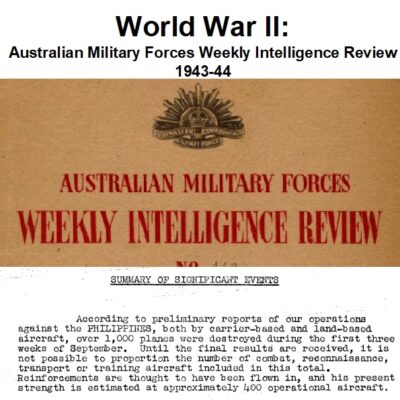
World War II: Australian Military Weekly Intelligence Reports 1943-44
$3.94 Add to Cart -
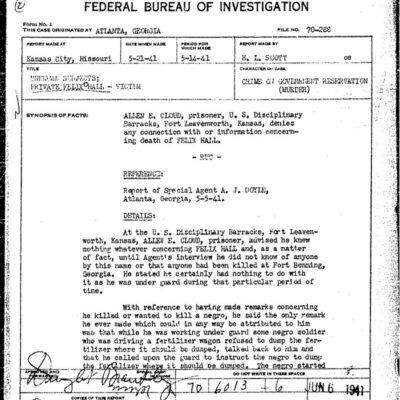
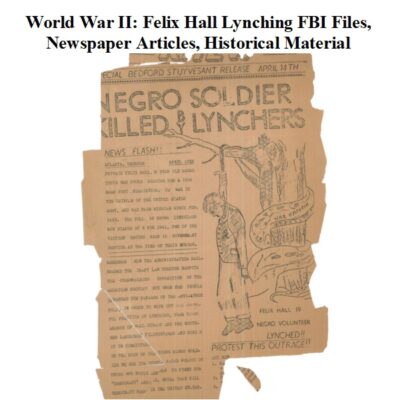
World War II: Felix Hall Lynching – FBI Files, Articles, Historical Records
$9.99 Add to Cart -
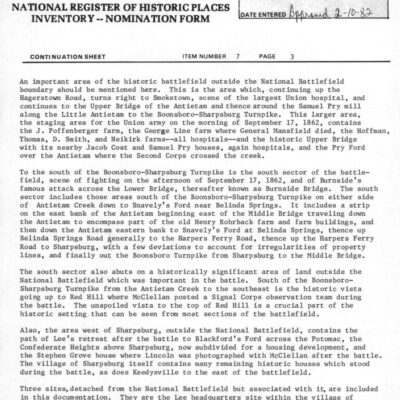
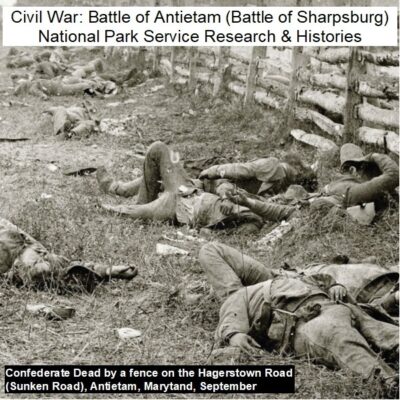
Civil War: Battle of Antietam (Sharpsburg) – National Park Service Archives
$9.99 Add to Cart -
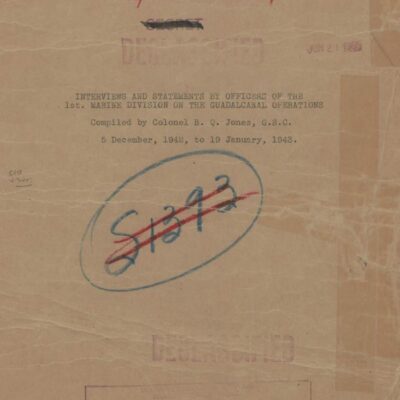
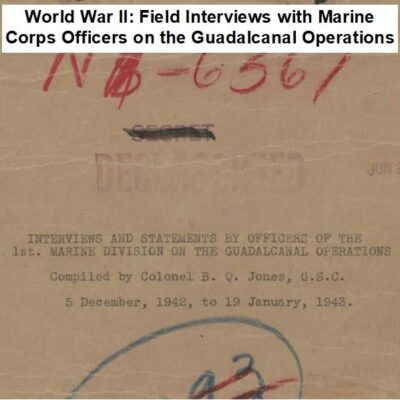
World War II: Marine Corps Officer Interviews on Guadalcanal Operations
$3.94 Add to Cart